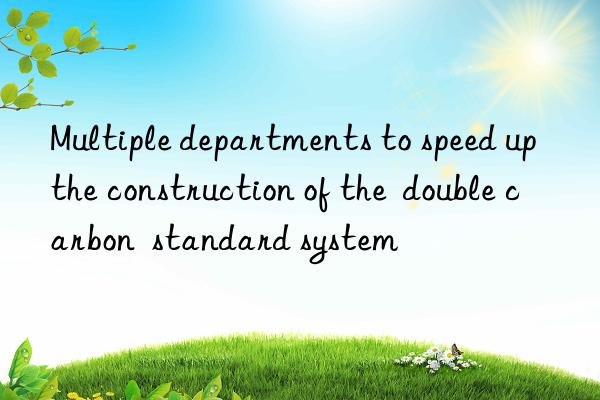
At present, my country is actively and steadily promoting carbon neutrality at peak carbon, and is setting off a systematic green transformation in various fields of economy and society. As a basic work, how to calculate accurate data for carbon accounting in different fields, different industries, different categories and technical products? To promote energy saving, carbon reduction and clean energy utilization, how to calculate how much carbon is emitted and how much carbon is reduced? Answering these questions is inseparable from the unification of standards. 11 departments including the National Standards Committee recently jointly issued the "Guidelines for the Construction of the Carbon Neutral Standard System for Carbon Dafeng", which further refined the standard system and clarified the focus of standardization work.
According to statistics, there are currently more than 1,800 national standards and more than 2,300 industry standards that directly support "double carbon", involving carbon emission accounting and verification, energy conservation, non-fossil energy, new power systems, clean utilization of fossil energy, resource recycling, Carbon sinks and other aspects provide strong support for the implementation of policies such as the elimination of backward production capacity, energy conservation review, differential electricity prices, and carbon emission rights trading. However, compared with the requirements to achieve the "double carbon" goal, there is still a big gap in the "double carbon" standardization work. For example, the field and scope of standards need to be further expanded, the quantity and quality of standards need to be improved, and the coordination and promotion efforts must also be strengthened.
Realizing the "dual carbon" goal urgently requires the construction of a "dual carbon" standard system with a reasonable structure, clear layers, and adaptable to high-quality economic and social development. The "Construction Guide" helps key industries and fields such as energy, industry, transportation, urban and rural construction, agriculture and rural areas, forestry and grassland, finance, public institutions, and residents' life to achieve green and low-carbon development. Utilization, green and low-carbon development of energy, and deep adjustment of industrial structure are of great significance.
The "Construction Guidelines" draw up the "construction drawings" for the formulation and revision of the "Double Carbon" standard in the next three years. That is, by 2025, no less than 1,000 national standards and industry standards (including foreign language versions) will be formulated and revised, and the degree of consistency with international standards will be significantly improved. Carbon accounting verification in major industries will achieve full coverage of standards, and energy efficiency standards for key industries and products will Indicators are steadily improving. In this regard, we must be soberly aware that effective implementation is more critical than setting goals. Adhere to overall planning and coordination, strengthen task implementation, organize various industry associations, standardization technical committees, etc. to accelerate the construction of the standard system, ensure that the "construction drawings" are effective, and support my country's various industries to accelerate energy transformation and promote the realization of carbon peak carbon neutrality make fundamental contributions to the goals.



 微信扫一扫打赏
微信扫一扫打赏
